A Massive Building Deconstruction Project
July 19, 2024
Hi All,
Vacation (Mostly)
This week is my yearly trip to my maternal grandmother’s family beach cottage. This house is on a teeny strip of sand between a tidal marsh and the ocean. Just about nothing in this house has changed since it was built and purchased in the 1940’s by my great grandparents. It’s a wonderful opportunity to disconnect…. minus the wifi!
NYC Deconstruction Project
Speaking of older buildings, I wanted to tell you all about an incredible building deconstruction project happening in New York City. Dave Bennink and team, who I have mentioned here before and have also interviewed for The Untangling Circularity Podcast, make up RE-USE Consulting whose motto is “Building up an industry that takes down buildings”, which pretty much sums up what they do. They take buildings apart (deconstructing) and reuse everything they can. Dave and his team (he is most certainly a team player, constantly reminding me that he is part of a larger team) do deconstruction projects all over the US, but the project they are taking on in NYC is by far the largest they have ever done. Here’s how Dave described it in a LinkedIn post:
“#NYC administration has made a commitment to circular construction and we are compiling a master list of resources for a series of #circularconstruction projects that kick off with the flagship project, SPARC Kip's Bay. This is a 500,000 square foot building complex full of a variety of materials that hopefully will be reused/remanufactured into something else/repaired/recycled/or reused by the owner in the new buildings!!”
New York City and Mayor Eric Adams have committed to creating 400,000 green collar jobs, which is a big deal for the circular economy. The city actually owns this building complex and wants to reuse as much as possible from the old building instead of just landfilling all of it. Imagine all of the elements of a building: bricks, wood, windows, doors, carpeting, handles, cabinets, window shades, ceilings… it’s a long list of items. Once a building has been designed and plans are approved, all of those items are manufactured around the world and sent to the construction site where they are used to create the building. Dave and his team do this process in reverse.
First and maybe most importantly, they create an inventory of EVERYTHING that makes up the building. For this SPARC project they will spend days walking through and inventorying everything inside these 500,000 square feet. I can’t even begin to imagine that list. Dave said, just for a sense of context, “Maybe its 10,000 items that weigh 20 million pounds… in the middle of Manhattan.” But Dave is not daunted, he has done this before; never at this scale, but he knows how the process works. He helps the team identify every single thing in the building, and he rates everything that’s reusable.
A key piece of the process is identifying multiples. For example, there are 600 dorm rooms in this building complex. Dorms are highly repetitive, so there might be hundreds of the exact same item, let’s say 600 of the exact same type of door. Dave’s team will inventory that door and eventually share it with the team who is designing the new building to see if they can reuse it in their plans.
Reuse Design
NERD ALERT: I almost fell off my seat when Dave told me that his deconstruction team has been integrated with the design team for the new building. The design team reviews the inventory lists from Dave’s team and considers what elements from the old buildings can be reused in the new buildings. They are also looking at ways to design the new building so its easier to deconstruct ('design for disassembly', more on that later). This is a huge step in the right direction for any circular product or project, being informed by the old for the creation of the new and the eventual reuse of the new as well.
Dave is trying to collect enough information about the old building to be able to say “Here are resources your already own; you already own these 1,000 doors, can you use some in the new building? We can refinish them to make them fit in with your design scheme.” He helps the designers understand the possibilities of reuse, including making modifications and refurbishment of old items to make them feel modern. For example, they can skin the veneer off of the 1,000 doors and add a new veneer, which would results in a 91% reclaimed door with 9% new veneer. It looks like a new door, but its a reclaimed door. If you think about the material composition of….anything… 91% is an incredible majority to be reused. Dave says:
We expand the circular economy to meet the need. We help create new products out of old products that are acceptable to more people.
Circular Economy Regional Networks
One of the ways Dave and his team work is to encourage new and existing businesses to monetize the elements of deconstructed buildings. To stick with the door example, a new or existing construction company could see the potential in those 1,000 doors and take them all to refinish them. Maybe this is something they already do, or maybe it’s a new business idea that gets off the ground because this project is so huge in scale. It is also a workforce development opportunity for New York City, which needs the expertise and interest of the construction industry to figure out how to best reuse elements that come from this and future projects. Dave + team look at what infrastructure exists now for repurposing and recycling and work to create what doesn’t exist yet.
When this project ends, Dave doesn’t want any new businesses and infrastructure to end, and he’s trying to create a circular network where all of these vendors are sharing information within the reuse network so everyone knows what others have and what others need. With each project Dave’s team takes on, they work to create a mini circular economy for deconstruction and reuse in that area or region. There’s also a huge opportunity here for software to catalog all of this information, all of the inventory that can be reused, and Dave said that there are many vendors getting into this space.
Coming Up
In Dave’s near future, he and his team will be spending days going through the existing buildings to create the inventory. “There are 1,000 rooms. We have to go in every room, crawl in the attic, go in the basement. There are 100,000+ bricks: how can we save and reuse them?” I was surprised to learn that they have to figure out where everything is going before they are removed; they can’t just save them without a plan. They can’t put everything in one gigantic warehouse and wait for it to be used; they need to figure out who can reuse those 100,000 bricks, those 1,000 doors, etc, so as they deconstruct the items can be grouped and sent to different locations on their way to reuse. They have to create demand for all of these materials ahead of time, helping existing and new businesses imagine how they can reuse elements (profitably, I might add). Dave is doing all of this inventorying and planning a year ahead of the start of the demolition/deconstruction. As you can maybe imagine, tearing a building down and throwing the entire thing in a landfill is the norm. Taking a building apart and sorting out pieces for reuse is an entirely different process.
Design for Reuse
The last piece I want to mention is how Dave and team help think about the new building/project (which is even bigger than the existing). They help the new designers thing about design for disassembly, recycling and the next life of all the things the designers are putting into the new building. For example, if you glue carpet down it can’t be reused, so Dave wants to help the designers come up with a type of carpet that can be tacked down instead. There’s a lot of value in reviewing what was done before and how it can be improved for reuse. Many designers think in terms of “What does it look like? What does it cost? How strong is it? How long will it last?” Dave also wants them to think in terms of 100 years. “Your building wont last forever. Think about the end.”
The Untangling Circularity Podcast
This week: Measurement and Metrics for the Circular Journey of What We Wear with guests Casey Plasker of Circularly and Peter Whitcomb of Tersus Solutions.
Listen on Apple Podcasts, Spotify.
Until next week,
Cynthia

